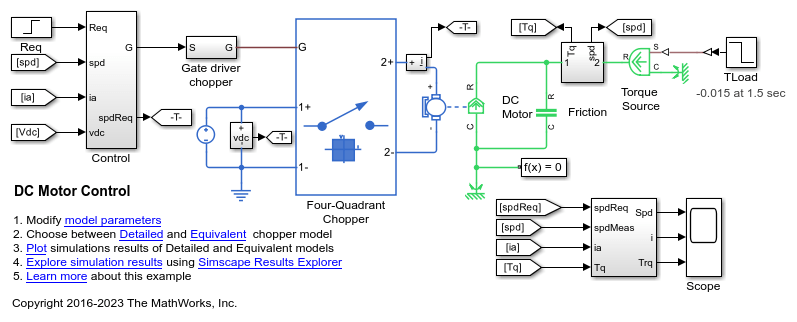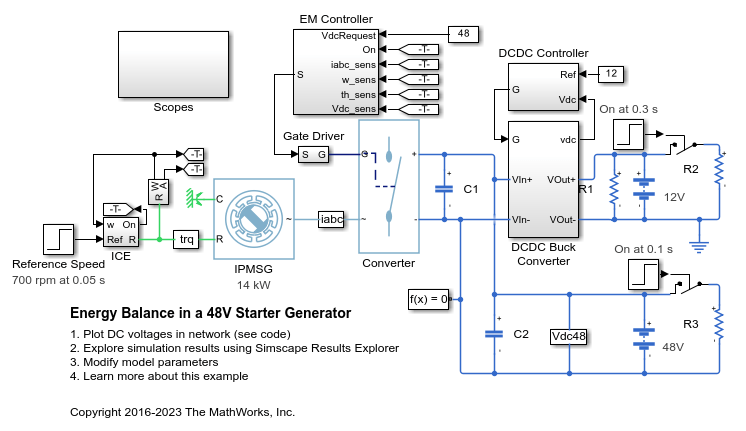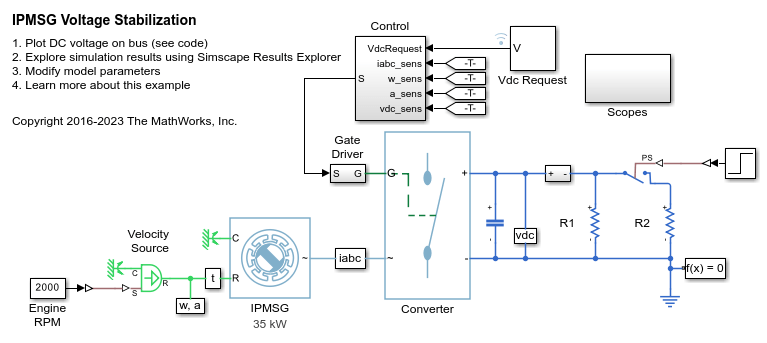PI Controller (Discrete or Continuous)
Discrete-time or continuous-time PI controller with external anti-windup input
Libraries:
Simscape /
Electrical /
Control /
General Control
Description
The Discrete PI Controller block implements discrete-time or continuous-time PI control with external anti-windup input.
This diagram shows the equivalent circuit for the controller with external anti-windup input.

Equations
The PI Controller (Discrete or Continuous) block calculates the control signal using the backward Euler discretization method:
where
u is the control signal.
Kp is the proportional gain coefficient.
Ki is the integral gain coefficient.
Kaw is the anti-windup gain coefficient.
Ts is the sampling period.
e is the error signal.
To prevent excessive overshoot, the block can use back calculation to implement an external anti-windup mechanism. It inputs du(k), the difference between the saturated control signal, usat(k), and the calculated unsaturated control signal, u(k). It then multiplies the difference by the anti-windup coefficient and adds the amplified signal from the integral gain.
Examples
Ports
Input
Output
Parameters
References
[1] Åström, K. and T. Hägglund. Advanced PID Control. Research Triangle Park, NC: ISA, 2005.



